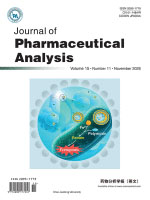2017 Vol. 7, No. 4
Display Method:
2017, 7(4): 203-207.
Abstract:
2017, 7(4): 208-213.
Abstract:
2017, 7(4): 214-222.
Abstract:
2017, 7(4): 223-230.
Abstract:
2017, 7(4): 231-236.
Abstract:
2017, 7(4): 237-243.
Abstract:
2017, 7(4): 244-251.
Abstract:
2017, 7(4): 252-257.
Abstract:
2017, 7(4): 265-269.
Abstract:



